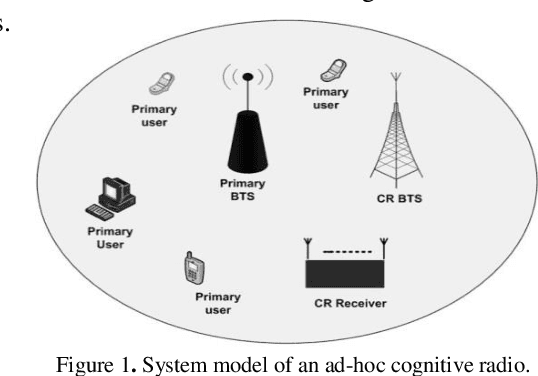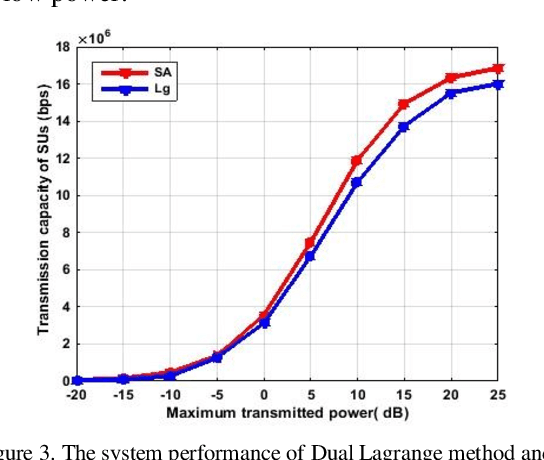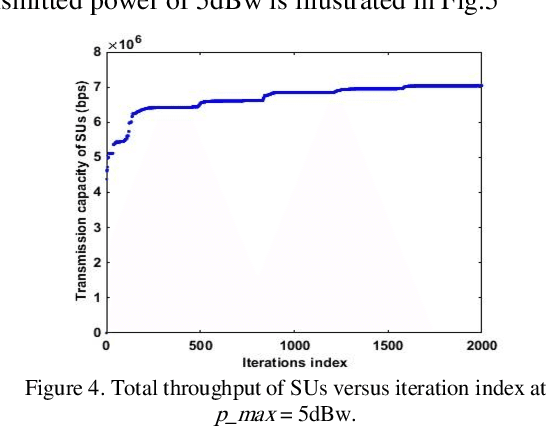Mona Shokair
A Proposed Sub-optimal Power Allocation using Simulated Annealing in Cognitive Radio Networks
Jun 23, 2022



Abstract:Due to the rapid demand for wireless services and the increase in the wireless device count, there is a lack of available spectrum bands which constrain the further development of wireless communication .Therefore, Cognitive Radio (CR) has been adopted as a promising solution because of its ability to exploit the inefficiently used spectrum of licensed bands. Orthogonal Frequency Division Multiplexing (OFDM) become the enabling technique for CR due to its flexibility of allocating the available spectrum in dynamic environment. In this paper, a proposed distributed resource allocation framework based on Simulated Annealing (SA) algorithm for downlink OFDM-Based Cognitive Radio Network (CRN) will be applied. This algorithm gives less computational complexity for maximizing the total SUs transmission capacity. Moreover, the interference introduced from other Secondary Users (SUs) will be considered. For the sake of comparison, Lagrange dual method will be used. Simulation results showed that the proposed algorithm gives a better transmission capacity compared with Lagrange dual method. The parameters which are considered for comparison are maximum transmitted power, number of Primary Users (PUs) and number of SUs.
 Add to Chrome
Add to Chrome Add to Firefox
Add to Firefox Add to Edge
Add to Edge